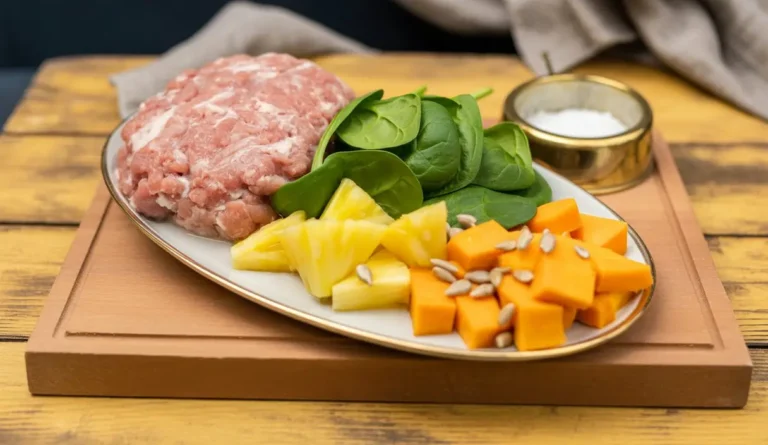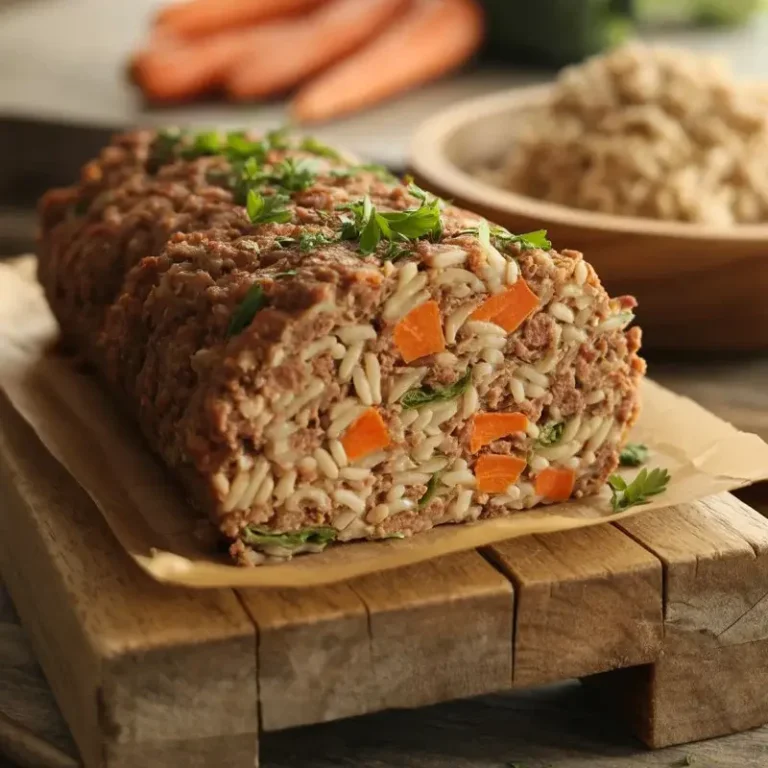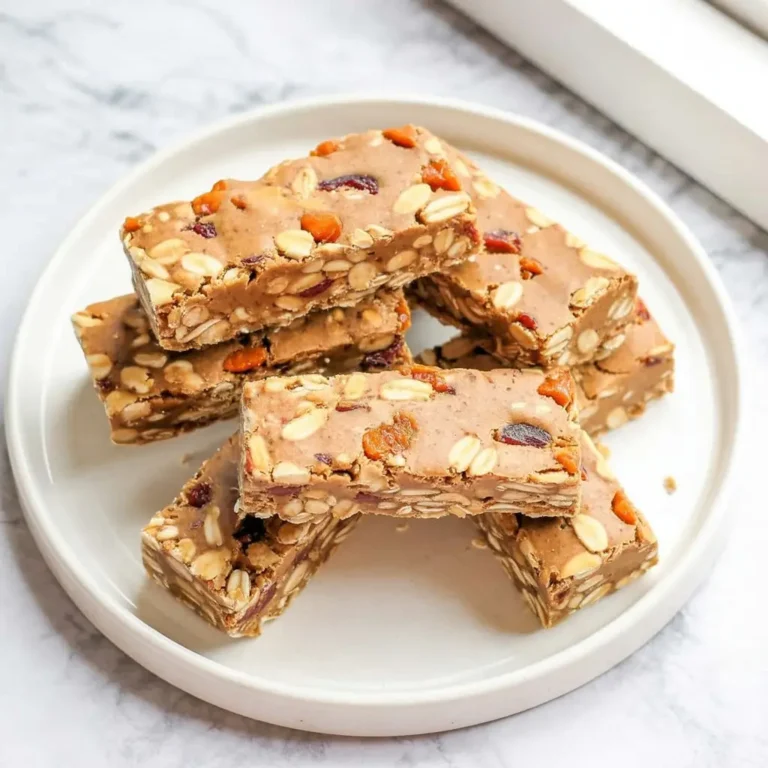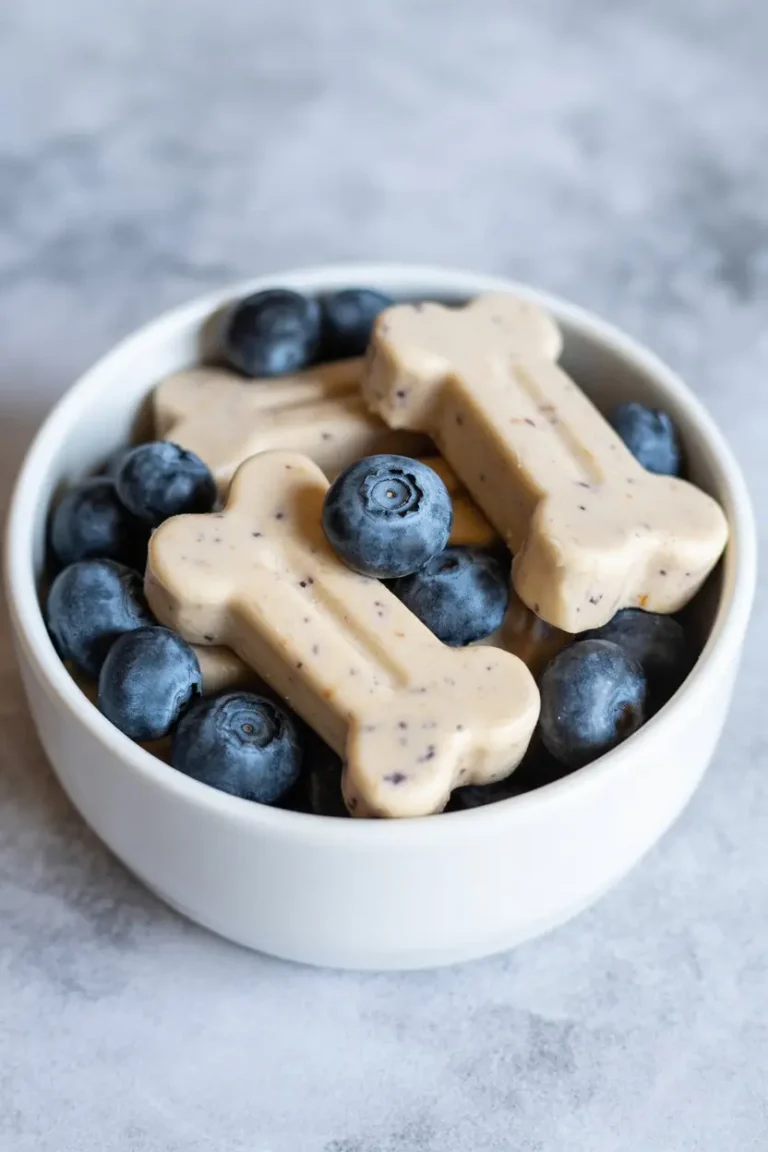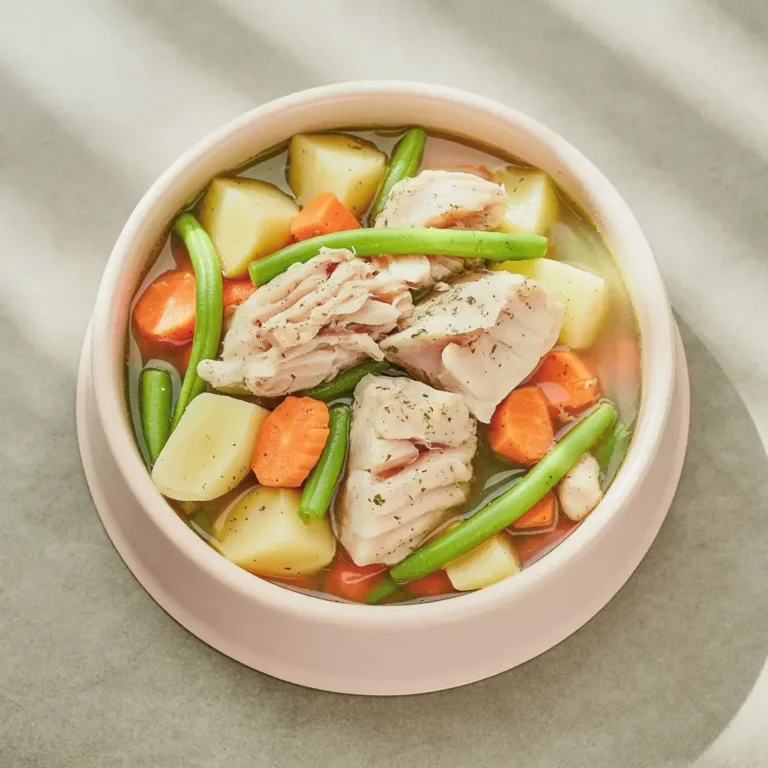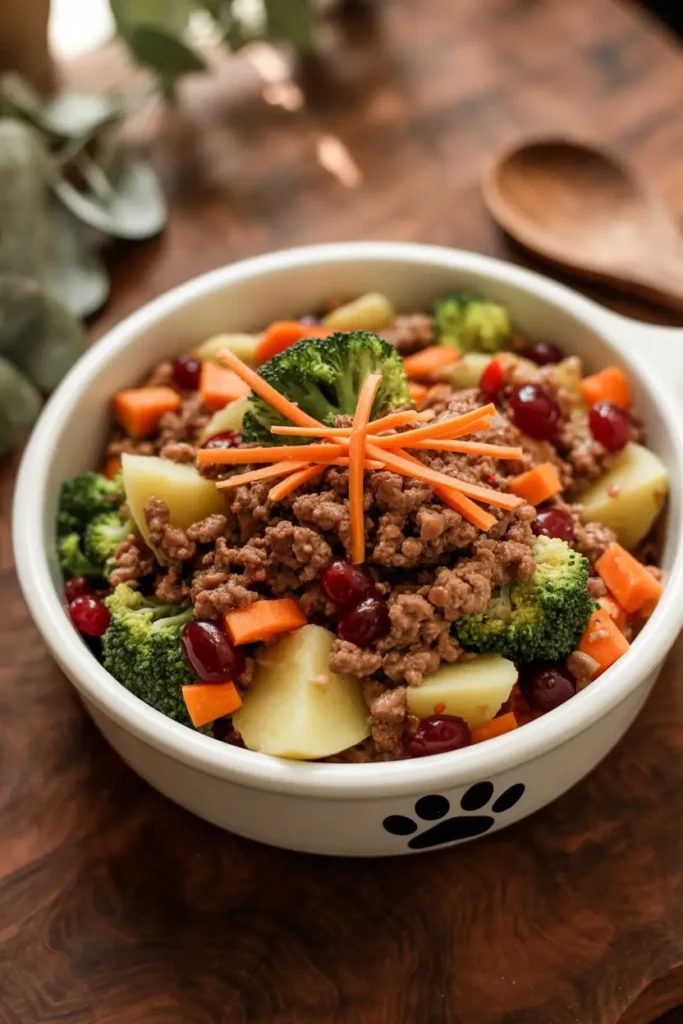
Ok, so let’s be honest…
If your dog could talk, they’d probably say something like: “You expect me to eat these dry brown rocks again?”
And you know what? They kinda have a point. 😂
That’s exactly why today’s recipe is going to change the game. It’s a homemade dog food meal using ground beef and broccoli (plus some bonus veggies), and it’s not just healthy—it’s something your pup will devour with those big wide “I love you so much, human” eyes.
And before you worry—nope, you do not need to be a trained pet nutritionist or even a great cook. If you’ve got a skillet and about 30 minutes, you’re golden.
Let’s get into it.
Why Homemade Dog Food?
Look, I’m not saying kibble is the enemy. But sometimes it’s nice to give your dog something real. Like food that didn’t come out of a bag, smell like cardboard, or look like something a squirrel would bury for the winter.
Homemade food gives you full control over the ingredients, which is great if your dog has allergies or a sensitive tummy. Plus, it makes you feel like a literal dog parent of the year.
You get the warm fuzzies. They get a happy belly. Win-win. 😊
What You’ll Need
Here’s the simple stuff you’ll want to grab before getting started:
- 1 lb lean ground beef (aim for 90% lean or higher)
- 1 cup broccoli florets (chopped small because… dog teeth)
- 1 medium sweet potato (peeled + diced)
- 1 large carrot (diced)
- 1 tablespoon olive oil (or coconut oil if your dog’s fancy like that)
- 1 cup low-sodium beef broth (make sure it doesn’t contain onions or garlic!)
- 1 teaspoon turmeric (optional, but great for joints and inflammation)
That’s it. No mystery powders. No weird supplements that cost $84 a bag. Just real ingredients your dog’s body will actually recognize.
Real Talk: Don’t Panic Over Tools
You don’t need a food processor, InstaPot, or some professional pet food mold (yes, those exist). All you need is:
- A skillet or saucepan (the bigger the better)
- A sharp knife and cutting board
- Something to stir with
- Measuring cups and spoons
- Storage containers or zip-top bags
That’s it. You got this.
Step-By-Step Instructions
- Prep your veggies first so you’re not panic-chopping while things are sizzling. Peel and dice your sweet potato and carrot. Chop up your broccoli small enough that your dog won’t have to chew like a goat.
- In your skillet, add the olive oil and ground beef over medium heat. Break it up with your spoon and cook until browned. If there’s a bunch of fat, drain it off. We’re going for “hearty,” not “greasy takeout.”
- Add in the sweet potato and carrot, then pour in your beef broth. Cover the skillet and let it simmer for about 10 minutes. The steam is doing the heavy lifting here.
- Now stir in the broccoli and turmeric (if using). Cover again and cook another 5 minutes or so—until all the veggies are soft but not mushy. Your kitchen will smell like a dog-approved Sunday dinner at this point.
- Let it cool before feeding it to your dog. Like actually cool. We don’t want excited dog tongues getting scorched.
- Serve it up on its own or mix a bit in with their usual kibble to ease them into it.
Boom. Homemade dog food. You did it. 🙌
Pro Tips From Someone Who’s Burnt a Pan or Two
- Skip the seasoning. This isn’t the time to show off your spice rack. Dogs don’t need salt, garlic, or onion, and some of those can be straight-up toxic.
- Cut veggies small. The smaller they are, the easier they’ll be to digest (and less likely to be suspiciously left in the bowl).
- Cool it down fully. I know your pup is looking at you like it’s been 84 years since they’ve eaten, but hot food = risky business.
- Store in daily portions. This makes it easier to grab-and-go for meals and helps with freshness. No one wants to be scraping crusty beef out of a big container three days later.
- Introduce it slowly. If your dog’s been on dry kibble their whole life, homemade food can be a little shocking to the system. Mix it in with regular food at first.
What If I Don’t Have These Ingredients?
Let’s talk swaps. Because life happens, and sometimes you’re out of carrots.
Protein Swaps:
- Ground turkey or chicken (less fat, still tasty)
- Canned salmon (watch the sodium though)
- Lean pork (fully cooked)
Veggie Options:
- Green beans instead of broccoli
- Pumpkin instead of sweet potato
- Zucchini, spinach, or peas are fair game too
Broth Alternatives:
- Water with a splash of plain, unsalted bone broth
- Plain chicken stock (again, low-sodium, no onion/garlic)
Your dog isn’t going to dock you points for switching things up. They just want something yummy in their bowl.
Want to Make It Ahead? Yes, Please.
This is a GREAT make-ahead recipe. Here’s how to do it without turning your kitchen into a full-blown science lab:
- Double the batch if you have freezer space.
- Portion into 1–2 day servings and store in containers or freezer bags.
- Label everything. No guessing games later.
- Freeze for up to 3 months. Defrost overnight in the fridge before serving.
Trust me, your future self will thank you.
Can We Talk Nutrition Real Quick?
This recipe is solidly healthy for most dogs, but here’s a general idea of what’s going on nutrition-wise:
Approximate per 1 cup serving:
- Calories: ~250
- Protein: ~22g
- Carbs: ~14g
- Fat: ~11g
- Fiber: ~3g
Not bad, right?
That being said, every dog is different—size, breed, energy level, health status—so if you’re planning to switch to homemade full-time, a vet or canine nutritionist can help you customize portions.
But for now? This is a great supplement or occasional meal.
How Long Does This Stuff Last?
Short answer: not forever.
- Fridge: Good for 3–4 days.
- Freezer: Up to 3 months.
- Serving leftovers: Reheat gently or let it thaw at room temp. Don’t nuke it super hot—no one likes lava bites.
Your Dog’s New Favorite Dinner: FAQs
Q: How much should I feed my dog? A: Depends on size. A 10 lb dog might eat ½ cup per meal. A 50 lb dog could be closer to 1½–2 cups. Adjust and monitor their weight/energy.
Q: Can I use white potatoes instead of sweet potatoes? A: Yup, just cook them well and skip green spots—they’re toxic.
Q: Do I have to use turmeric? A: Nope, totally optional. It has anti-inflammatory perks, but not necessary if your dog doesn’t need it or you don’t have it on hand.
Q: Can I mix this with kibble? A: Absolutely. It’s a great way to stretch the recipe and transition your dog slowly.
Wrap Up
So that’s the dish—literally and figuratively.
Homemade dog food doesn’t have to be complicated. And it definitely doesn’t have to be stressful. This recipe is easy, affordable, and full of real, nourishing food your dog will love you for.
If you give this a try, I’d love to hear how it went! Did your pup inhale it? Did they turn into a broccoli-loving maniac? Got questions or substitutions you used that worked great?
Let me know in the comments!
And hey—good job, chef. Your dog just got a gourmet meal. You kinda crushed it. 💥

